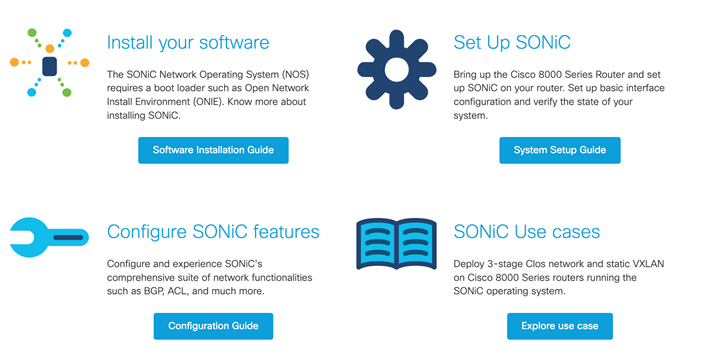- Why I recommend this OnePlus phone over the S25 Ultra - especially at this new low price
- I replaced my laptop with Microsoft's 12-inch Surface Pro for weeks - here's my buying advice now
- This palm recognition smart lock doubles as a video doorbell (and has no monthly fees)
- Samsung is giving these Galaxy phones a big One UI upgrade - here's which models qualify
- 7 MagSafe accessories that I recommend every iPhone user should have
Meet Rapidly Scaling Cloud Data Center Requirements with SONiC

Much like our blue furry anthropomorphic hedgehog friend who can run supersonic speeds, our networks today need to be fast and agile. Enter SONiC (Software for Open Networking in the Cloud). In the last few years SONiC has gained strong momentum in the community, and has been battle tested within some of the world’s largest and most demanding cloud networks.
SONiC is a powerful combination of scale and open source
SONiC is a free and open-source network operating system (based on Debian Linux and developed by Microsoft and the Open Compute Project) that runs on network devices such as routers and switches from multiple vendors and ASICs. A key component of SONiC is the Switch Abstraction Interface (SAI) that enables ASIC and hardware abstraction and network operating systems portability.
Why disaggregate hardware from software?
With the introduction of the Open Compute Project (OCP), vendors collaborate on designs and specifications to enable a more efficient, scalable, and versatile consumption of hardware and software. This initiative broadens the spectrum for cloud and service provider transformations, hardware innovations, software evolutions, flexibility, lower costs, and better control of the network infrastructure. It allows cloud operators to share the same software stack across hardware from multiple vendors. This also includes strong and long-lasting commitment to offer open APIs (Application Programming Interface) at every level of the networking stack and to allow service providers and web-scale customers to consume innovation in a way that best meets customer needs in a API first world.
Cisco 8000 series routers support disaggregating the hardware and software to provide a more robust, open ecosystem for service provider networks. As part of the disaggregation journey, Cisco supports installing SONiC on fixed form factors on the Cisco 8000 series routers.

Interested in learning more about SONiC?
The Cisco DevRel team is honored and thrilled to work with the Cisco MIG (Mass Infrastructure Group) team building the new home and documentation for SONiC at Cisco. Here you will find:
- all the documentation
- SONiC architecture information
- how to install /Set-Up SONiC
- a network scenario for 3-stage Clos Network with Static VXLAN to make networks scalable
You can configure and try out this use case on emulated Cisco 8000 routers using Cisco 8000 Emulator Notebooks. Install the Cisco 8000 Hardware Emulator, to access these notebooks.
We’d love to hear what you think. Ask a question or leave a comment below.
And stay connected with Cisco DevNet on social!
LinkedIn | Twitter @CiscoDevNet | Facebook | YouTube Channel
Share:

